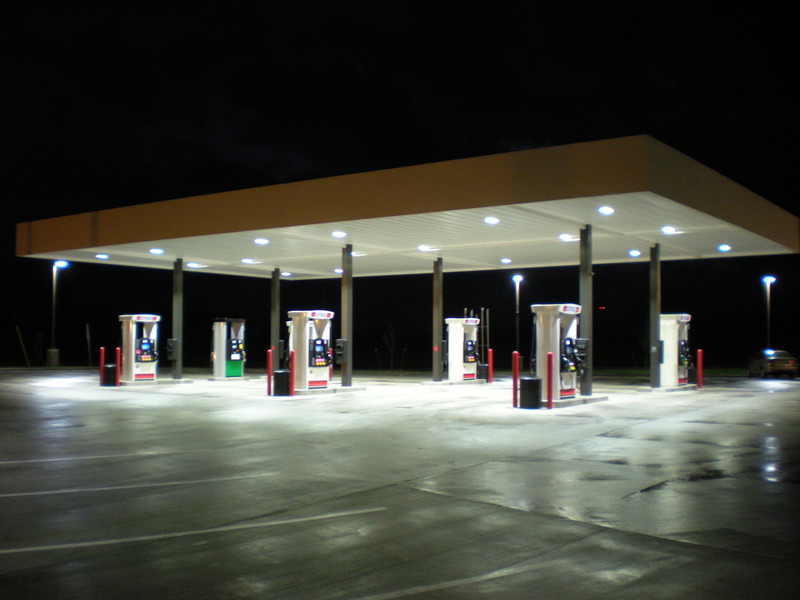When it comes to your gas station’s aesthetic appeal and functionality, the fuel canopy design and color play a crucial role. The canopy protects from elements and plays a significant role in brand identity. But finding the right design and color according to your gas station need may be daunting, but fear not. With these 10 expert tips, you will be able to make informed decisions. A well-designed canopy not only serves as a shelter for your customers but also plays a significant role in attracting business and enhancing the overall brand image. If you’re planning to set up a new gas station or revamp an old one, here are some essential tips to help you choose the right canopy design.
Consider The Functionality
Protection From Elements
The primary purpose of a gas station canopy is to shield customers from various weather elements like rain, snow, or the scorching sun. The canopy should be made of durable materials that can withstand various weather conditions, and its design should allow easy water runoff.
Safety
The canopy should be built to ensure safety, especially given the flammable nature of fuel. Ensure that it allows proper ventilation and does not become a hazard itself.
Think About Branding And Aesthetics
Your canopy can be a massive billboard for your gas station. Think about integrating your brand colors, logo, and other design elements into the canopy’s design. A consistent color scheme and branding can make your gas station stand out and be easily recognizable.
Pay Attention To The Structural Design
The structural design plays a pivotal role in ensuring the durability and safety of the canopy. Here are a few considerations: Your canopy will face the elements day in and day out. Choose materials that are durable, weather-resistant, and easy to clean. This will not only ensure longevity but also reduce maintenance costs over time. For the quality canopy, you need to choose a reputable petroleum equipment company.
Columns
Choose a design that strategically places the columns to avoid hindrance during vehicle movement. The fewer columns, the better – but safety should never be compromised.
Height
Ensure that the canopy is high enough to accommodate larger vehicles like trucks and SUVs without compromising the structural integrity.
Materials
Opt for durable materials that require minimal maintenance and have a longer lifespan. Steel and aluminum are popular choices due to their durability and rust-resistance.
Incorporate Energy-Efficient Lighting
Good lighting under the canopy is essential for both safety and aesthetics. It ensures that customers can see clearly while refueling, especially during the night. Opt for energy-efficient LED lights that provide ample illumination without driving up your electricity bills. Additionally, LED lights tend to have a longer lifespan, reducing the need for frequent replacements.
Evaluate Maintenance Needs
A canopy that requires frequent maintenance can become a costly affair in the long run. When choosing a design, consider factors such as ease of cleaning, resilience to bird droppings or tree sap, and potential wear and tear. A sloped design, for instance, can facilitate easier water runoff and cleaning.
Plan For Future Expansion
While it might seem like you’re planning too far ahead, it’s essential to consider potential future expansion plans. If you plan to add more pumps or other amenities in the future, your canopy design should be adaptable. This foresight will save you from unnecessary restructuring expenses down the line.
Budget Constraints
It’s essential to strike a balance between your dream canopy design and your budget. While you shouldn’t compromise on essential features, certain aesthetic enhancements can be postponed or modified to fit within your budget. Remember, a good canopy design is an investment that can boost your gas station’s appeal and ROI.
Stay Updated With Trends
While functionality should be the primary focus, keeping up with canopy design trends can help your gas station appear modern and appealing. Whether it’s the use of solar panels on the canopy’s surface or adopting sleek, minimalistic designs, staying updated can give your gas station a competitive edge.
Local Regulations And Requirements
Before finalizing any design, familiarize yourself with local zoning regulations, building codes, and any other regulatory requirements related to canopy installations. These regulations may affect the height, size, placement, and other aspects of the canopy design. Here are some steps to consider when ensuring compliance with local regulations and requirements for canopy installations:
Research Local Regulations
Start by researching and understanding the zoning regulations and building codes specific to the area where the canopy will be installed. These regulations may be available through local government websites or building departments.
Height And Size Restrictions
Some areas might have restrictions on the height and size of structures, including canopies. Make sure your design adheres to these limitations.
Placement
Zoning regulations might dictate setback requirements, which determine how far the canopy must be placed from property lines, streets, and other structures.
Permits
Depending on the scope of the canopy installation, you might need to obtain permits from the local building department. The permitting process ensures that your design meets safety and zoning requirements.
Structural And Wind Load Requirements
Canopies need to be designed to withstand various weather conditions, including wind loads and snow loads. Local regulations might specify these requirements to ensure structural integrity.
Accessibility
Ensure that your canopy design complies with accessibility standards, including requirements for ramps, pathways, and clearances for individuals with disabilities.
Fire Safety
Some regions have fire safety regulations that affect the materials used in the canopy and the distance between structures to prevent fire spread.
Electrical And Lighting Codes
If your canopy involves lighting, make sure the electrical work conforms to local electrical codes.
Environmental Impact
Depending on the location, there might be environmental regulations that affect the type of materials you can use or how the canopy installation might impact the local ecosystem.
Historical Or Aesthetic Considerations
If your project is in a historically preserved area or has aesthetic requirements, you may need to follow specific guidelines to maintain the visual character of the neighborhood.
Public Safety
Consider how the canopy might affect visibility, traffic flow, and other public safety concerns.
Consult Professionals
If you’re unfamiliar with local regulations or the technical aspects of canopy design, consider consulting with professionals, such as architects, engineers, or legal experts, who are knowledgeable about local codes and can help ensure complian
Seek Professional Assistance
Lastly, if you’re unsure about the best design to suit your needs, consult with professionals who specialize in gas station canopy design and construction. They can provide valuable insights, ensuring that your canopy is not only aesthetically pleasing but also functional, safe, and compliant with regulations.
Final Words
With the help of these tips, you can enhance your gas station’s appeal and customer experience. Make sure you always prioritize durability, lighting, and maintenance while staying open to modern trends and potential future expansion. You can visit APEC if you are looking for a top-notch brand for canopies. The canopy is more than just a structure – it’s the face of your gas station, welcoming customers and ensuring their comfort. By investing time and thought into choosing the right design, you can significantly enhance the functionality, safety, and appeal of your gas station, paving the way for increased business and customer loyalty. Whether you’re leaning towards a traditional design or a modern, state-of-the-art structure, the tips above can guide you in making an informed decision.
















